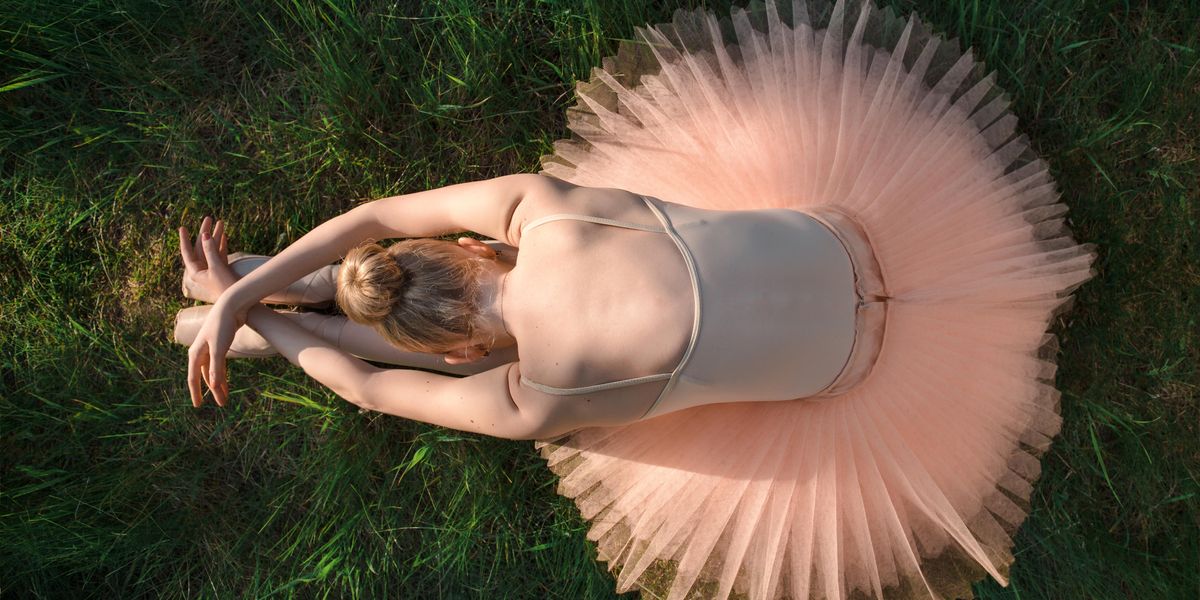Put Your Best Tendu Forward
It’s a chilly winter day in New York, but inside 890 Broadway it’s stiflingly warm. Students stretch their limbs, eyeing each other nervously. This is, after all, a New York audition for American Ballet Theatre’s Summer Intensive. Riana Aldana, 17, is listening to her iPod to get in her zone. She’s jittery and excited, “but kind of in a confident way,” she says, adding she’s already been accepted to other programs. “But ABT is my first choice.”
The dancers enter the studio single file in numerical order, taking their places along the barre. Faculty members stand at the front, clipboards in hand. “Can we start with arms off the barre, everybody?” asks the intensive’s artistic director Melissa Allen Bowman. Eyes shift anxiously toward the three adjudicators as they slowly walk along the rows of barres, jotting down notes on each student.
Sixteen-year-old Emily Richards is attempting to ignore the competition. “I try to think, ‘Oh, an audition,’ like it’s not a big deal,” she says. “When I’m not as nervous, I do better.”
As barre progresses, faces flush with exertion. “Breathing!” Bowman reminds them. “You’re turnin’ purple!” She begins each combination with the arms en bas, stressing very specific, unaffected port de bras. The dancers quickly shift to center, groups scurrying into place. Every so often a few students stand in the wrong order. “Remember, we’re scoring all of you,” Bowman cautions. “We may accidentally give your score to somebody else!” She ends the audition with tours for the boys and pointework for the girls. Within a week the dancers will know their fates—and both Aldana and Richards will be accepted to the New York site.
Each year, approximately 3,000 students audition for ABT’s Summer Intensive. The program is based in five cities: New York; Detroit; Tuscaloosa, Alabama; Austin, Texas, and Irvine, California. Each site focuses on different levels of development: Tuscaloosa and Austin develop placement and strength, Detroit refines and strengthens intermediate to advanced dancers, and Irvine and New York offer intense training for preprofessional levels. The teachers place students in the appropriate site at the time of their audition, based on the scores and their location preferences. The number of dancers accepted depends on the results of the audition tour. While the New York intensive is the longest and most coveted, Bowman emphatically stresses that all of the sites are important. The programs are staggered throughout the summer, with the Irvine intensive held toward the end of July, allowing some students to attend two programs.
Each intensive consists of four classes a day, plus rehearsals for a final performance. Scholarships are awarded on a merit basis only. Faculty includes ABT artistic staff, including Artistic Director Kevin McKenzie, and former ABT dancers such as Amanda McKerrow and Leslie Browne. Students are exposed to ABT’s National Training Curriculum, which combines principles from the Russian, Italian and French schools. The curriculum’s exact, unembellished style and unaffected port de bras aim to create versatile dancers for today’s varied company repertories. A medical advisory board helped develop the curriculum to ensure dancers use their bodies properly. “The dancers look and feel better because they know where everything goes,” says Bowman.
The summer program also serves as a starting point for potential ABT members. Artistic coordinators at each site scout for students who would thrive at ABT’s Jacqueline Kennedy Onassis School. “It’s definitely the first step to possibly joining ABT,” says Bowman. Principal David Hallberg and soloists Misty Copeland and Kristi Boone are among the many company dancers discovered at the summer program.
So what are adjudicators looking for in prospective students? “Alignment, placement, and varying degrees of strength, coordination and artistry,” says Bowman. Strong pointework is also a major determining factor. A well-proportioned body helps, but Bowman stresses a healthy weight. “That goes either way. We need to make sure everybody can handle the rigors of an intensive.”
But what stands out most is confidence. “Look secure,” says Bowman, “and have a passion that comes through.” Falling out of a pirouette doesn’t matter as much as how you handle falling out of it.
Major turnoffs? Slouching, talking and looking disinterested. “We can see that,” says Bowman. “It makes me ask, ‘Why are you here?’ We want to see enthusiasm, excitement—you have to love it!”
The staff takes nerves into account, and Bowman notes that most students loosen up by center. Still, she sees many holding back because they’re afraid of doing something wrong. Her advice is to really show what makes you special. “Use your épaulement and your arms,” she advises. “And go for it. Dance a bit more. Show us what you got!”
Amy Brandt is the Ask Amy columnist for
Pointe.





